A comprehension activity using poetry.
A comprehension task to use when teaching students how to interpret poetry. This task includes; a poem, matching questions and suggested answers.
Updated: 07 Jun 2018
A comprehension activity using poetry.
Non-Editable: PDF
Pages: 4 Pages
Years: 3 - 4
Tag #TeachStarter on Instagram for a chance to be featured!
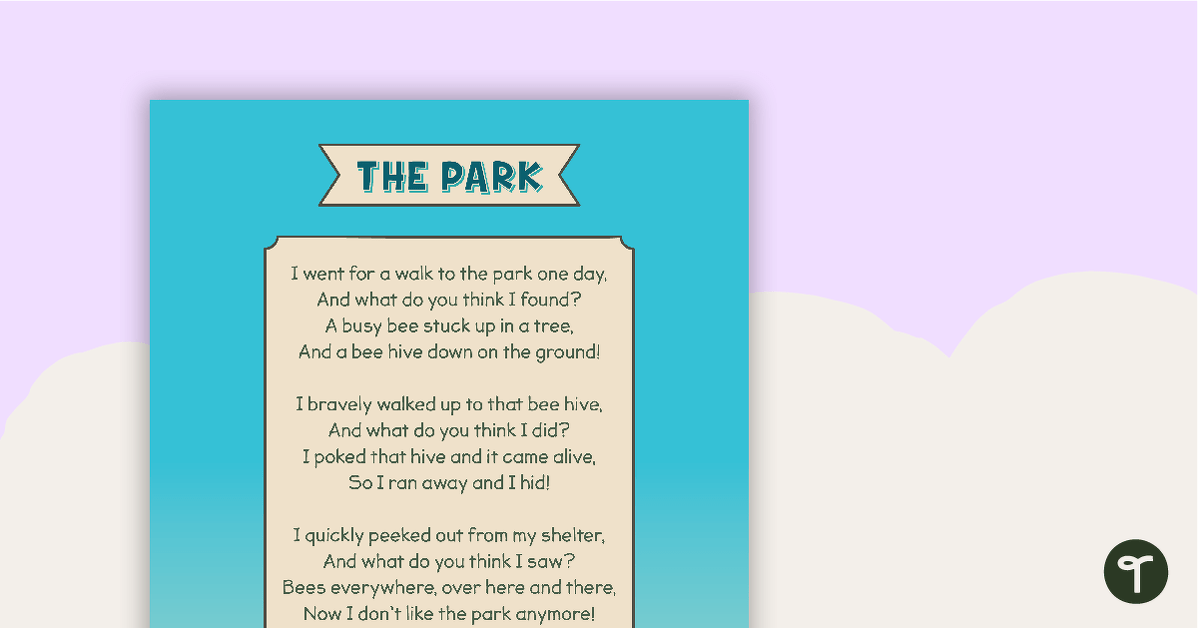
A comprehension activity using poetry.
A comprehension task to use when teaching students how to interpret poetry. This task includes; a poem, matching questions and suggested answers.

We create premium quality, downloadable teaching resources for primary/elementary school teachers that make classrooms buzz!
Would you like something changed or customised on this resource? While our team makes every effort to complete change suggestions, we can't guarantee that every change will be completed.
Did you spot an error on this resource? Please let us know and we will fix it shortly.
Are you having trouble downloading or viewing this resource? Please try the following steps:
If you are still having difficulty, please visit the Teach Starter Help Desk or contact us .
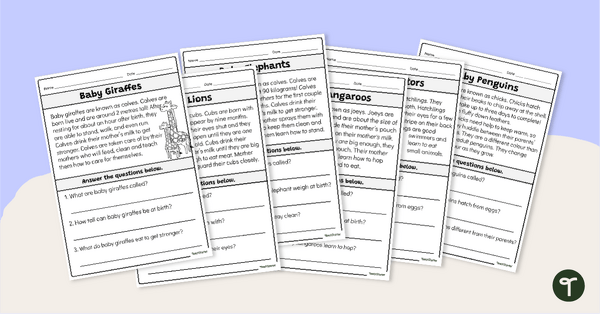
Learn about animals and their babies with a pack of printable Animal Babies Reading Worksheets for Years 1 & 2.
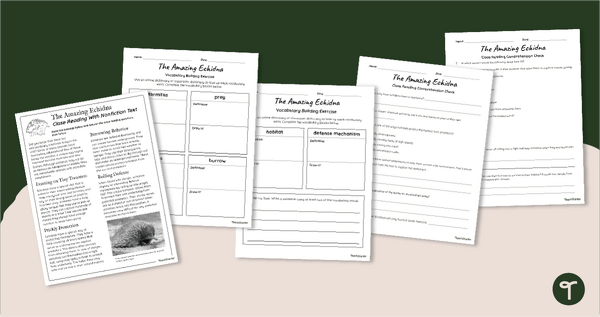
Discover the adaptations of the echidna with a printable reading passage and comprehension worksheet pack.
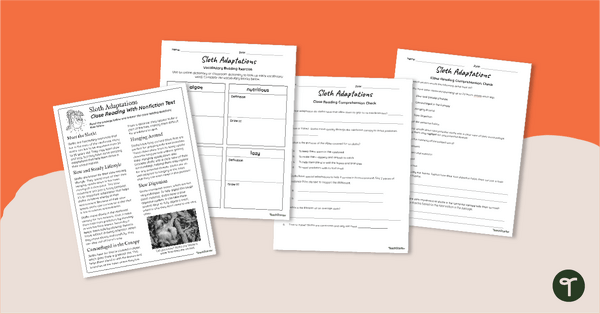
Read and comprehend nonfiction text about the adaptations of a sloth with a printable pack of reading skills worksheets.
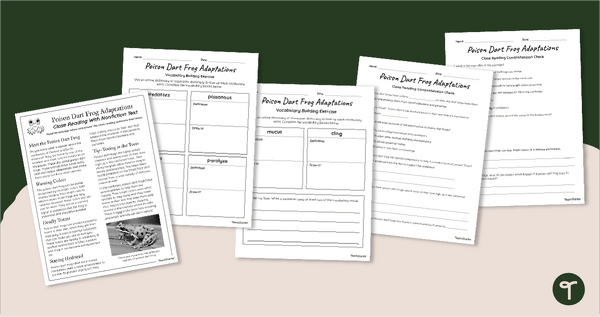
Explore the adaptations of a poison dart frog with printable reading comprehension worksheets for Year 4.

Learn about the physical and behavioural adaptations of a camel with a set of printable reading comprehension worksheets for Year 5.
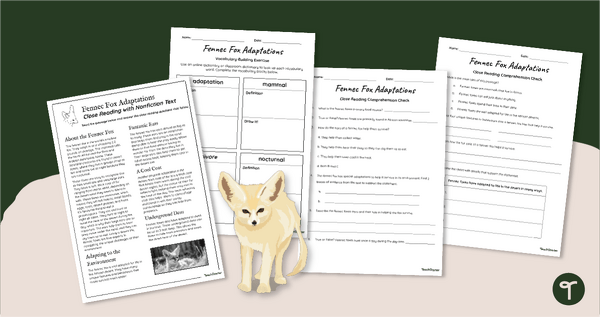
Read and learn about Fennec Fox adaptations with a set of printable Reading Comprehension Worksheets for Year 5.

Learn about the physical and behavioural adaptations of the platypus with a set of printable reading comprehension worksheets for Year 3.

Read and learn about bees, pollination and honey production with a reading comprehension passage and worksheet pack.

Read and learn about the features and adaptations of the giant squid with reading comprehension worksheets for years 5 and 6.
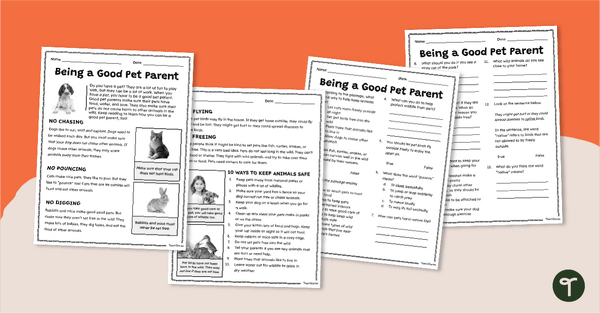
Build comprehension skills and learn about being a good pet parent by limiting pets' impact on ecosystems with a reading passage and comprehension questions.
0 Comments
Write a review to help other teachers and parents like yourself. If you'd like to request a change to this resource, or report an error, select the corresponding tab above.